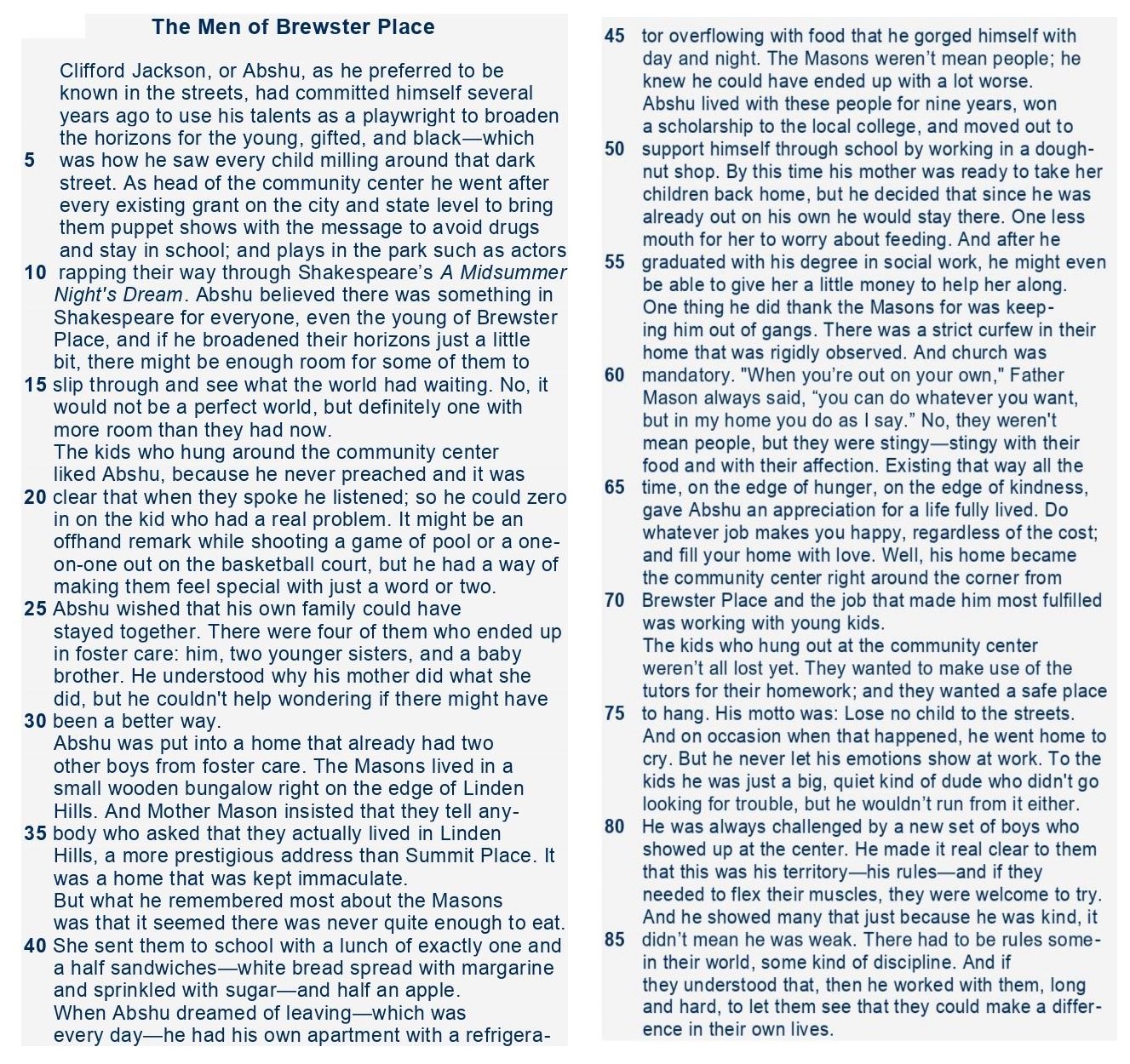
The ideal response is C because it is never stated who is narrating the narrative. However, this unnamed narrator is familiar enough with the protagonist, Abshu, to go into great detail about Abshu's challenging upbringing and his dedication to working in a community center as an adult.
The optimal response is D because the first paragraph makes it clear that Abshu wanted to broaden the perspectives of the kids he worked with. Abshu "had committed himself to... widen the horizons for the young, gifted, and black—which was how he saw every child milling around," the passage reads in lines 2–5. He wished to extend their perspectives, as is stated again in line 12 of the poem.
A is the ideal response. The author's statement that "If we put up one writer against another, aren't we giving in to... the adversarial mentality of patriarchal culture" in lines 62–65 is the key to this decision. This implies that the author thinks rating, counting, and categorizing are competitive approaches that are ineffective.
The ideal response is C. Lines 68–69 make evident the author's answer to Arnold's viewpoint: "Who's to say what's best, who's to say what's relevant?" This query demonstrates the author's curiosity about the source of "what is good."
The ideal response is B. Lines 4-6 provide direct support for this decision: "Abshu perceived every child roaming about that dark street as young, gifted, and black."
The ideal response is D. Find the option that is NOT mentioned in the fourth paragraph, according to this test question. The fifth paragraph contains details about what Abshu remembers most about his experience with the Masons (lines 38-42).
The author regards all of the points made here as potential fixes to the issue of having a list of beloved women poets that is shorter than the list of beloved male poets, hence the optimum response is B. Reappraising the literary canon and adding new women's names are mentioned in lines 48–49; the value of some male poets is discussed in lines 79–81; and lines 21–23 recommend reading "women poets of the past who have never been greatly read."
The ideal response is A. Merrill wanted "to dissociate [Bishop] from these shopworn polarities," as stated in the direct quote in lines 16–17, which alludes to his discussion of Bishop's desire to be "one of the forty, or forty thousand, best poets," rather than being categorized as "one of the four best women poets," in lines 14–15. (lines 11-12).
The ideal response is D since it provides the finest synopsis of the opening sentence. The author states at the outset that "The time is overdue to recognize that there is something of a vacuum in women's poetry" and continues by stating that this admission is "the first step" in reversing the current circumstance.
The scripture explicitly specifies in lines 66–68 that, in order to live a life fully, one should "perform whatever job makes you happy, regardless of the cost; and fill your home with love," hence the best response is A.
The ideal response is C. Lines 55–60, which clarify that women cannot say that they haven't "been allowed the depth of knowledge and experience" to become great writers, and at the same time state that there are "an abundance of" outstanding writers, provide clear evidence in favor of this choice.
Lines 6-7 specifically mention that Abshu "went after every existing grant on the city and state level," hence the optimal response is A. This assertion demonstrates unequivocally that he was diligent in his search for financial support.
C is the finest response. According to the third paragraph, "Abshu wished that his own family could have remained together," but "he understood why his mother did what she did."
The optimal response is C since both Abshu and the Masons made an effort to instill discipline in the kids in their care. Abshu attributed the rigorous curfew in the Masons' home with "keeping him out of gangs" (lines 58–59). (lines 57-58). At the community center, Abshu supported order as well: "In [the children's] world, there had to be some type of discipline and norms. If they did, he worked closely with them for a very long time " (lines 85-88).
The optimal response is D since "provided Abshu an appreciation for a life fully lived" is expressly mentioned in the second half of the ninth paragraph (line 66). The narrator continues by stating that Abshu felt "most fulfilled" while working with small children (lines 70-71). Abshu worked here as an adult.
Because B is the only option that accurately identifies the assistance provided by Jackson, Loomis Todd, and Lavinia Dickinson, it is the best response. Lines 34–35 mention that Jackson "wrote to [Emily] Dickinson, begging her to publish," Loomis Todd "painfully copied practically unintelligible pieces using a weird typewriter," and Lavinia Dickinson "rescued [Emily's] poetry from the darkness of a dresser drawer" (lines 27-28).